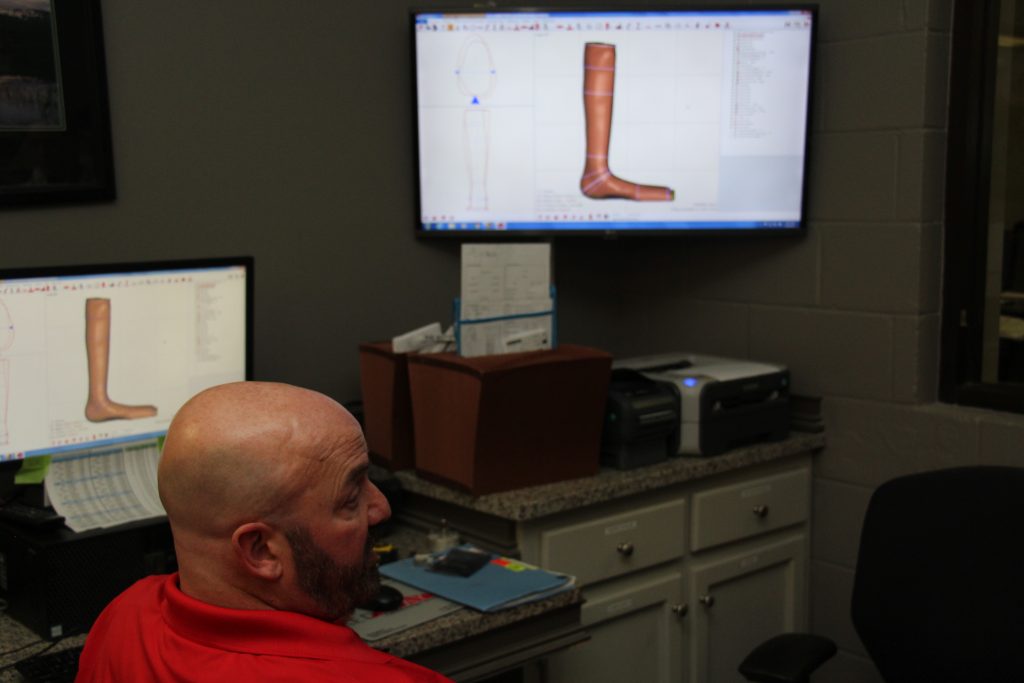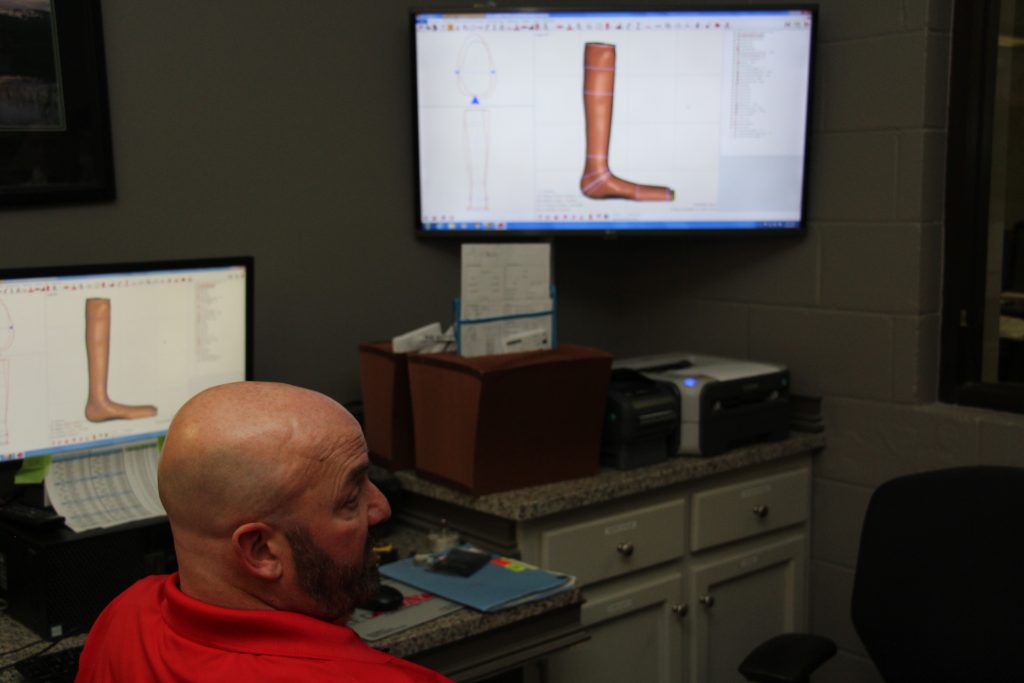Building a great prosthesis or orthosis is an art and a science. A lot of artistry goes into designing these devices, but we also use technology to our advantage.
Over the years, we’ve developed a proven three-step process that we use to create prosthetic and orthotic devices that fit perfectly and perform beautifully. The cutting-edge technology we use in our process is not only very effective; we also think it’s extremely cool.
Here, we’ll walk through the three components we use to build better devices for our patients.
Step #1: Laser Scanning
In the days before modern technology, we fitted patients by taking plaster casts of their limbs and then used those to carve the final product.
These days, we don’t have to do that. We have something better: laser-scanning technology.
Using a high-precision laser scanner (we have two different ways to scan your body), we can accurately capture the shape of the residual limb, or the part being braced, and upload the scan into the computer.
Lasers are far more precise and accurate than plaster or any other by-hand method. Better precision results in a better fit with the final prosthesis or brace.
Laser scans also let you show physical proof to insurance companies of why you need a new limb or brace. It gives you justification that increases the chances that insurance companies will pay for it.
Laser scanning also gives you a track record of how you have grown, which is really important when it comes to adjusting devices.
Step #2: Upload to CAD
After we take the laser scan, we upload it to our Rodin 4D computer-aided design (CAD) software.
Rodin 4D allows us to start designing the device. We can change the shape, tweak it, and make it exactly how we want.
One big advantage of using a CAD system is that you can see what the finished product will be like before you go through the production process. If there’s a problem with fit, you can notice it well before you start carving anything.
Step #3: Carving the Piece
Finally, after we’ve scanned your body and uploaded the scan into CAD to ensure the correct fit, we start the carving process.
We use a highly-specialized robot that is the first of its kind in the state of Alabama to carve solid pieces from blocks of foam. The robot is programmed using CAM software - computer-aided manufacturing - that is accurate down to millimeters. It’s amazing to watch it rotate and carve with such master precision far beyond what human hands can deliver. Since the precision is so high, the fit is guaranteed to be better than what can be done by hand.
Better Devices for Deserving Patients
Our patients deserve the best-fitting prosthetic and orthotic devices in the world. We’re confident that our three-step process using cutting-edge technology delivers those devices to our patients and gives them something that will fit and function as well as possible.
Learn more about our process by consulting with our team of specialists, and contact us to learn more about how you can get started with recognizing your possibilities.

